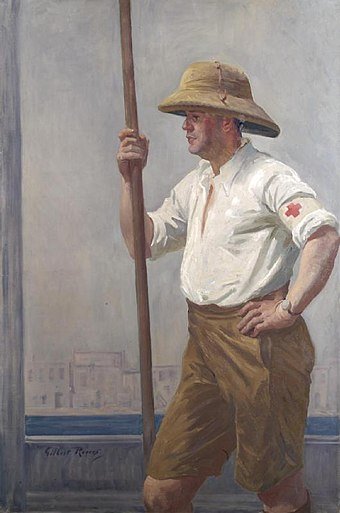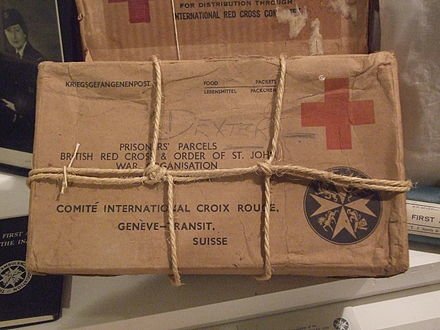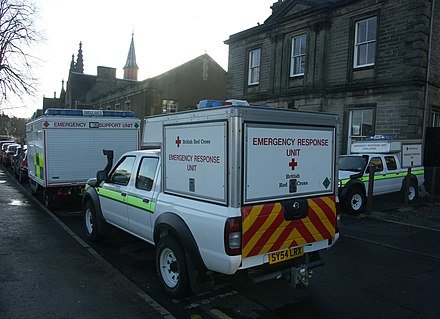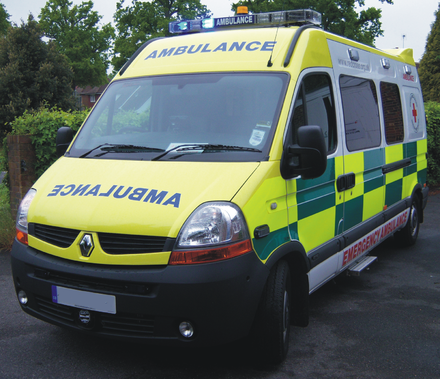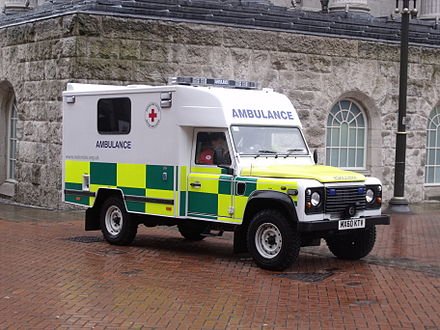British Heritage
Remember, Cherish, Learn.
beta
British Red Cross
Contribution of the British Red Cross to British Heritage.
The British Red Cross Society holds a significant place in British heritage as the United Kingdom body of the International Red Cross and Red Crescent Movement. Since its formation in 1870, the society has played a crucial role in providing humanitarian aid to people in crisis, both within the UK and overseas. With the mission of mobilizing the power of humanity, the British Red Cross has consistently demonstrated a commitment to help those in need without discrimination, irrespective of their ethnic origin, nationality, political beliefs, or religion.
Throughout its history, the British Red Cross has remained steadfast in its dedication to alleviating human suffering, particularly during times of conflict and disaster. Its success lies in its ability to adapt to changing circumstances and deliver essential aid and services where they are most needed. As a registered charity, the organization relies on the generosity of individuals, corporations, and the government to fund its operations and fulfill its humanitarian mandate.
The British Red Cross's contributions to British heritage go beyond its domestic efforts. It has been instrumental in establishing and supporting Red Cross societies in various Commonwealth nations, which have now become independent national societies. Additionally, the society has played an essential role in the development and expansion of the International Red Cross and Red Crescent Movement, becoming a key contributor to its pool of emergency relief workers.
The British Red Cross was established in 1870, just seven years after the formation of the international movement in Switzerland. The society's founding was a response to the Franco-Prussian War and the growing movement across Europe to create similar volunteer medical organizations. Initially named the British National Society for Aid to the Sick and Wounded in War, the society provided aid to both warring armies during the Franco-Prussian War and subsequent 19th-century conflicts, operating under the protection of the Red Cross emblem.
In 1905, the society was reconstituted as the British Red Cross Society, receiving its first Royal Charter from King Edward VII in 1908, with Queen Alexandra serving as its president. The outbreak of the Great War in 1914 saw the British Red Cross and the Order of St. John Ambulance forming the Joint War Committee and Joint War Organization, combining their resources and expertise to create Voluntary Aid Detachments (VADs). These detachments, staffed by trained volunteers, offered vital support in hospitals, rest stations, and work parties.
The British Red Cross's commitment to assisting during conflicts continued beyond the world wars, with the society establishing overseas branches and aiding in the improvement of health, disease prevention, and suffering mitigation worldwide.
After World War II, the British Red Cross played a crucial role in supporting displaced civilians and providing relief to people globally, including during major crises such as the Hungarian Revolution of 1956, the Famine in Africa during the 1980s, and the 1999 Armenia-Colombia earthquake. While the society no longer sends its volunteers abroad, it remains a leading contributor of delegates to the International Red Cross pool of emergency relief workers.
Within the UK, the British Red Cross has been at the forefront of providing emergency response services during major disasters, including the Aberfan coal tip slide in 1966, the Pan Am Flight 103 bombing in Lockerbie in 1988, and the 7 July 2005 London bombings. Their support spans from front-line medical provision to running helplines for concerned relatives and offering long-term emotional care for victims.
The British Red Cross is widely recognized for its first aid services at public events, including sports matches, concerts, and running events. Thousands of volunteers are trained to offer care to the injured, showcasing the society's commitment to promoting first aid awareness and education.
As a charity organization, the British Red Cross relies heavily on voluntary contributions from the public and corporate donors to carry out its vital work. Annually, the society organizes numerous fundraising events, including sponsored walks, bike rides, and awareness campaigns. Corporate partnerships, such as being chosen as Tesco's charity of the year in 2007, have significantly boosted the society's funding and enabled its various initiatives.
The British Red Cross Society's enduring legacy is deeply embedded in British heritage. As a symbol of humanitarian aid and compassion, the society's commitment to providing help in times of crisis, both at home and abroad, has left an indelible mark on the nation's history. With its unwavering dedication to mobilizing the power of humanity and refusal to ignore people in crisis, the British Red Cross continues to serve as an essential pillar of the International Red Cross and Red Crescent Movement and a testament to the values of solidarity and humanity.
Legacy and Success of the British Red Cross
Throughout its history, the British Red Cross has remained steadfast in its dedication to alleviating human suffering, particularly during times of conflict and disaster. Its success lies in its ability to adapt to changing circumstances and deliver essential aid and services where they are most needed. As a registered charity, the organization relies on the generosity of individuals, corporations, and the government to fund its operations and fulfill its humanitarian mandate.
The British Red Cross's contributions to British heritage go beyond its domestic efforts. It has been instrumental in establishing and supporting Red Cross societies in various Commonwealth nations, which have now become independent national societies. Additionally, the society has played an essential role in the development and expansion of the International Red Cross and Red Crescent Movement, becoming a key contributor to its pool of emergency relief workers.
Formation and Early Activities
The British Red Cross was established in 1870, just seven years after the formation of the international movement in Switzerland. The society's founding was a response to the Franco-Prussian War and the growing movement across Europe to create similar volunteer medical organizations. Initially named the British National Society for Aid to the Sick and Wounded in War, the society provided aid to both warring armies during the Franco-Prussian War and subsequent 19th-century conflicts, operating under the protection of the Red Cross emblem.
Royal Charter and Expansion
In 1905, the society was reconstituted as the British Red Cross Society, receiving its first Royal Charter from King Edward VII in 1908, with Queen Alexandra serving as its president. The outbreak of the Great War in 1914 saw the British Red Cross and the Order of St. John Ambulance forming the Joint War Committee and Joint War Organization, combining their resources and expertise to create Voluntary Aid Detachments (VADs). These detachments, staffed by trained volunteers, offered vital support in hospitals, rest stations, and work parties.
The British Red Cross's commitment to assisting during conflicts continued beyond the world wars, with the society establishing overseas branches and aiding in the improvement of health, disease prevention, and suffering mitigation worldwide.
Humanitarian Efforts and International Relief
After World War II, the British Red Cross played a crucial role in supporting displaced civilians and providing relief to people globally, including during major crises such as the Hungarian Revolution of 1956, the Famine in Africa during the 1980s, and the 1999 Armenia-Colombia earthquake. While the society no longer sends its volunteers abroad, it remains a leading contributor of delegates to the International Red Cross pool of emergency relief workers.
Domestic Activities and First Aid Services
Within the UK, the British Red Cross has been at the forefront of providing emergency response services during major disasters, including the Aberfan coal tip slide in 1966, the Pan Am Flight 103 bombing in Lockerbie in 1988, and the 7 July 2005 London bombings. Their support spans from front-line medical provision to running helplines for concerned relatives and offering long-term emotional care for victims.
The British Red Cross is widely recognized for its first aid services at public events, including sports matches, concerts, and running events. Thousands of volunteers are trained to offer care to the injured, showcasing the society's commitment to promoting first aid awareness and education.
Fundraising and Corporate Donations
As a charity organization, the British Red Cross relies heavily on voluntary contributions from the public and corporate donors to carry out its vital work. Annually, the society organizes numerous fundraising events, including sponsored walks, bike rides, and awareness campaigns. Corporate partnerships, such as being chosen as Tesco's charity of the year in 2007, have significantly boosted the society's funding and enabled its various initiatives.
Conclusion
The British Red Cross Society's enduring legacy is deeply embedded in British heritage. As a symbol of humanitarian aid and compassion, the society's commitment to providing help in times of crisis, both at home and abroad, has left an indelible mark on the nation's history. With its unwavering dedication to mobilizing the power of humanity and refusal to ignore people in crisis, the British Red Cross continues to serve as an essential pillar of the International Red Cross and Red Crescent Movement and a testament to the values of solidarity and humanity.
- British Red Crossen.wikipedia.org




